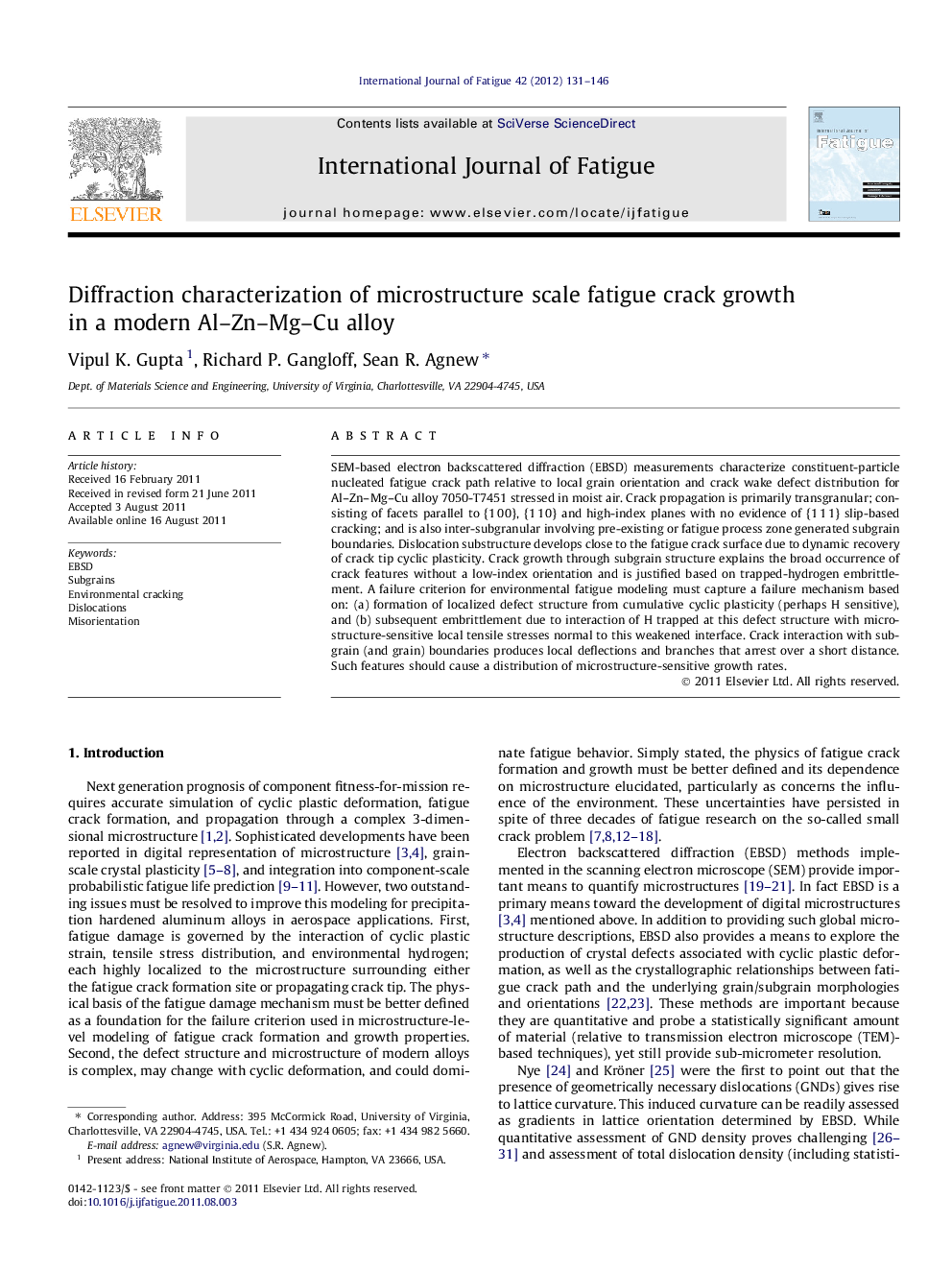| کد مقاله | کد نشریه | سال انتشار | مقاله انگلیسی | نسخه تمام متن |
|---|---|---|---|---|
| 781055 | 1463790 | 2012 | 16 صفحه PDF | دانلود رایگان |

SEM-based electron backscattered diffraction (EBSD) measurements characterize constituent-particle nucleated fatigue crack path relative to local grain orientation and crack wake defect distribution for Al–Zn–Mg–Cu alloy 7050-T7451 stressed in moist air. Crack propagation is primarily transgranular; consisting of facets parallel to {1 0 0}, {1 1 0} and high-index planes with no evidence of {1 1 1} slip-based cracking; and is also inter-subgranular involving pre-existing or fatigue process zone generated subgrain boundaries. Dislocation substructure develops close to the fatigue crack surface due to dynamic recovery of crack tip cyclic plasticity. Crack growth through subgrain structure explains the broad occurrence of crack features without a low-index orientation and is justified based on trapped-hydrogen embrittlement. A failure criterion for environmental fatigue modeling must capture a failure mechanism based on: (a) formation of localized defect structure from cumulative cyclic plasticity (perhaps H sensitive), and (b) subsequent embrittlement due to interaction of H trapped at this defect structure with microstructure-sensitive local tensile stresses normal to this weakened interface. Crack interaction with subgrain (and grain) boundaries produces local deflections and branches that arrest over a short distance. Such features should cause a distribution of microstructure-sensitive growth rates.
► EBSD measurements to characterize constituent-particle nucleated fatigue crack path.
► Crack path is inter-subgranular or transgranular with facets along low-index planes.
► Crack grows through subgrains, either pre-existing or evolved with strain cycles.
► No evidence of {1 1 1} slip-plane or slip-band cracking during environment fatigue.
► Failure occurs by dislocation substructure, trapped H and local tensile stresses.
Journal: International Journal of Fatigue - Volume 42, September 2012, Pages 131–146